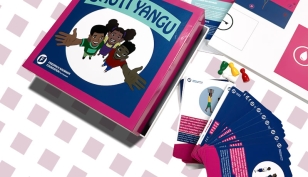A complete guide to choosing board game components and accessories
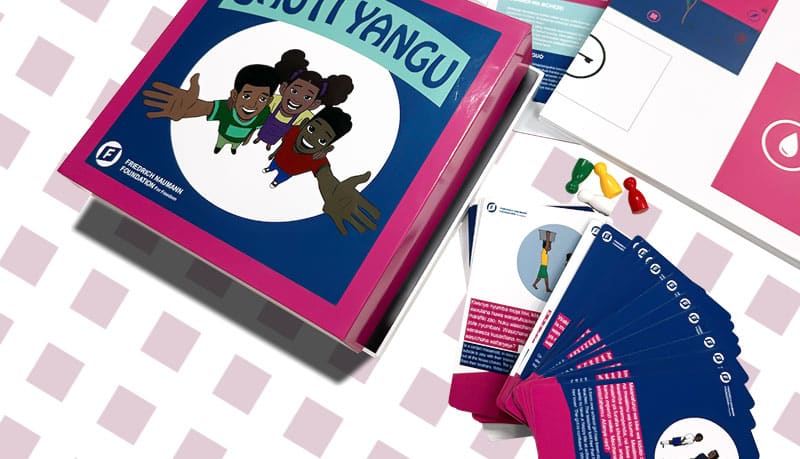
Board Game Printed by QinPrinting
When you first explore making your own board game, one thing quickly stands out: the sheer number of pieces involved. Dice, cards, counters, coins, miniatures—there's a lot more to it than just a board! As you refine your theme and mechanics, the question arises: What should a board game include?
If you're new to game design, the variety can feel overwhelming, even if you're an experienced player. To help, we'll break down the most common components—the industry term for all the physical elements of a game. Some will be familiar; others might be new. You may even invent your own.
Before we dive in, a quick note: "components" covers everything, including the board itself—whether flat, folding, or modular—so we'll stick with that term. Many component names are generic: meeples refer to small figurative player pieces (think Carcassonne's colored figures or Everdell's woodland creatures), dice applies to any solid shape with numbers or percentages for rolling random results, and miniatures describe realistic molded characters, from people to dragons.
A list of key components
To keep things simple, we'll stick to generic definitions. Not every board game needs every component—some, like the board itself, are essential, but many are optional. In fact, the real question isn't "What should a board game include?" but rather "What could it include?"
This list outlines the possibilities. Once you understand how different components interact in gameplay, you can mix and match to create the perfect combination for your design.
A game board
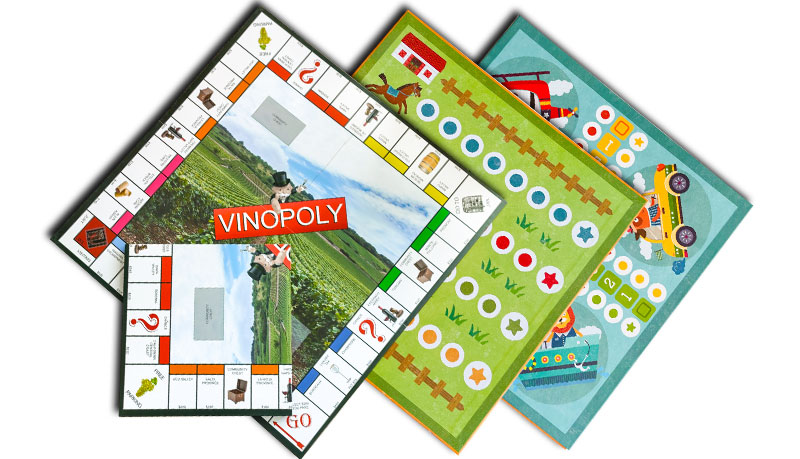
Game Boards Printed by QinPrinting
Since we're talking about board games, it makes sense to start with the board itself. But there's a distinction between board games and tabletop games. A tabletop game doesn't require a board—just a surface—so card games, paper-and-pencil games, and many puzzles fall into this category. A board game, by definition, must have a board, though it's often played on a tabletop (or even the floor).
The classic board is a printed, foldable rectangle or square, like in Clue or Monopoly. Typically, it sits at the center of play, with players positioned around it—sometimes more than one per side. Some games use modular boards, made of interlocking sections that change shape as the game unfolds, common in role-playing games.
Boards don't have to be square. They can be round, hexagonal, or any shape that fits your theme and mechanics. While a standard rectangular board is cost-effective and easy to produce, exploring creative alternatives can add extra dimension and appeal to your game design.
Game cards
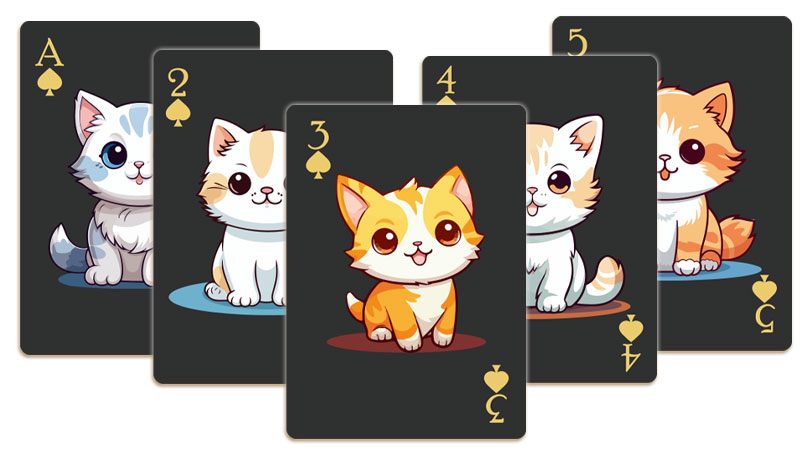
Board Game Card Printed by QinPrinting
Cards are one of the oldest game components, dating back to China before the 10th century AD. While none of the originals survive, ancient texts confirm their existence.
Modern game cards are typically laminated cardstock, similar in size to poker cards but varying in shape. They can represent characters, powers, numbers, instructions, penalties, or bonuses. Cards may be pictorial, symbolic, numerical, textual, or a mix of all three.
A core function of cards is to introduce randomness, challenging players to adapt to new situations. They can also be a win condition—for example, collecting a full set—or serve as tools for building powers and abilities, increasing a player's chances of success.
Chips, chits, coins, and counters
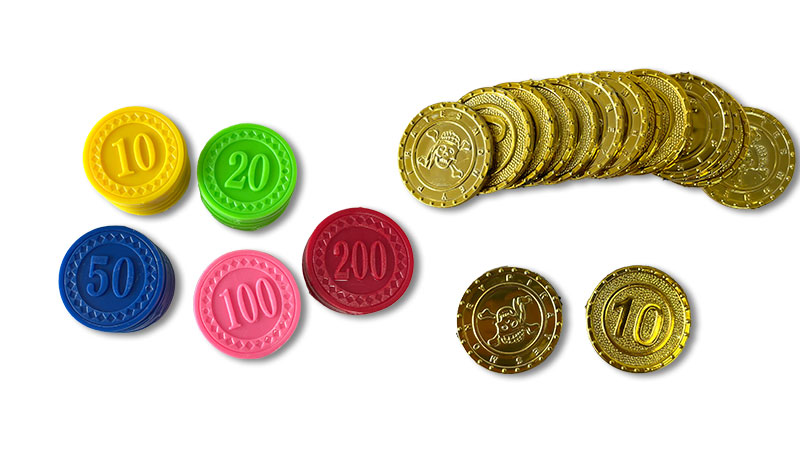
Image from QinPrinting
These components belong to the same family, distinguished mainly by their function rather than their form. Many trace their roots to poker games played in Old West saloons, later adapted for board games.
Chips are small, round pieces—usually plastic but sometimes cardboard, metal, or ceramic—used to represent currency or values. They often feature numbers or symbols and come in different colors.
Chits are similar but made of cardboard. Typically printed on perforated sheets, they need to be pressed out before play. They can represent players, currencies, skills, scores, and more.
Coins also stem from poker and usually represent money in games, like the gold doubloons in Pirate's Cove. Most are cardboard or plastic, but premium versions can be metal. In gameplay, they may serve as a currency system, part of a win condition, or another mechanic of your choice. During development, household coins can be handy stand-ins.
Counters are small, flat disks—typically circular and made of cardboard, plastic, wood, or ceramic—used to track movement, scores, or limits. Think of Ludo, Checkers, or Backgammon.
These versatile components offer endless possibilities. How you use them is up to your game design and imagination.
Dice, spinners, and other random number generators
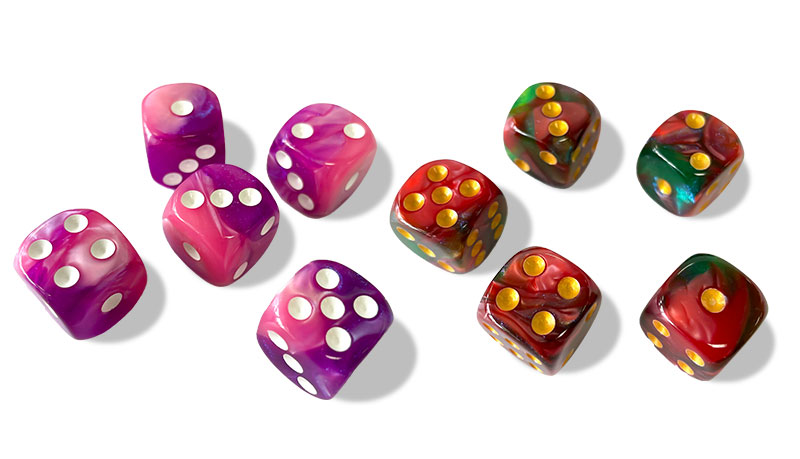
Image from QinPrinting
Most board games blend chance and strategy. The simplest way to introduce chance is through a random number generator (RNG). While dice and spinners aren't truly random in a mathematical sense, they work well enough for most games. Digital RNGs exist as apps, but let's focus on the most common physical options.
Dice are geometric solids—traditionally six-sided cubes—rolled to generate scores. The classic die (singular of dice) has numbered dots, but modern dice range from 4 to 20 sides. They're identified by 'D' plus the number of sides: a D6 is a standard six-sided die, a D4 is pyramid-shaped, and a D20 has twenty triangular faces. Role-playing games often use percentile dice—a pair of D10s that combine to generate a percentage (e.g., rolling a 3 and 0 gives 30%).
Dice can determine movement, selection processes, combat outcomes, or rewards. Many games use multiple types of dice to create more complex mechanics.
Spinners are an even older randomizer. One type resembles a spinning top with numbered sides, while another works like a clock face with a rotating hand. Players spin and read the result where it lands.
Custom Dice don't always feature numbers. Some games use dice with symbols, stickers, or characters to dictate actions, directions, or objectives. Instead of just rolling for movement or combat, dice can decide player actions or even whose turn is next.
When designing your game, don't feel limited by traditional components—there are endless ways to innovate based on your game's needs and mechanics.
Meeples, miniatures, pawns, and standees
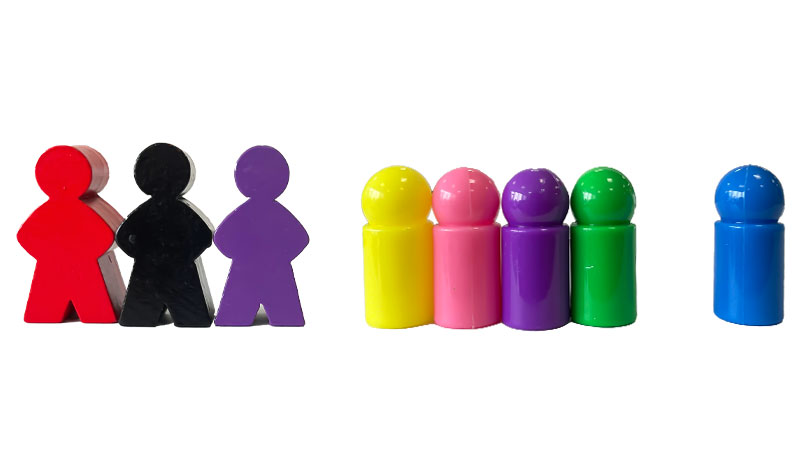
Image from QinPrinting
These are all game pieces that represent players or characters, moving around the board to achieve objectives. While they serve similar functions, they vary in form, cost, and thematic appeal. Your choice depends on your game's feel, budget, and design skills.
Meeples—a contraction of "my" and "people"—originated in Carcassonne (2000) when player Alison Hansel coined the term for its wooden figures. Now, meeple refers to any small, simple wooden piece representing a player. They've become so iconic that they appear on merchandise, from T-shirts to mugs.
Miniatures are detailed, molded figures originally from war and role-playing games. They represent characters, monsters, or units and are common in Dungeons & Dragons-inspired board games. Some games use miniatures for scenery elements, too. Typically made of injection-molded plastic, they're often painted and customized by hobbyists—sometimes collected as art as much as for play.
Pawns are the simplest, purely symbolic pieces. Unlike meeples, which resemble people or animals, pawns are abstract—small, conical with a rounded top. Most are made of colored plastic, like those in Clue.
Standees are printed cardboard cutouts slotted into plastic or wooden bases. They often represent characters, but can also be used for scenery or obstacles.
Tiles can be small game pieces (like letter tiles in Scrabble) or modular board elements that shape gameplay. In Carcassonne, for instance, players place tiles to build territories their meeples then occupy. Though a broad term, you'll recognize a tile when you see one!

Image from QinPrinting
Egg timers and 'pingers'
Some games require players to race against the clock—whether for a turn, a round, or the entire game. The classic timer is the hourglass, where sand runs from one bulb to another in a set period, usually a minute or two. Another option is a pinger—a mechanical kitchen timer that ticks and rings when time's up. Of course, any countdown device, including a phone app, works just as well. But most board games include hourglasses since they're lightweight and cost-effective.
The rulebook
Is a rulebook a component? Absolutely—without it, there's no game! Rulebooks range from simple foldouts to hardcover volumes, especially in role-playing games. For most board games, a well-illustrated booklet with clear sections, numbered headings, bullet points, and an index is ideal. Good design makes rules easy to learn and quick to reference during play. If you want to dive deeper into rulebook design, check out How to Write a Board Game Rulebook.
Your turn!
That's our guide to the most common board game components. Hopefully, it helps you decide which elements best suit your game's theme and mechanics. While this list covers the essentials, there are countless variations—some terms are even interchangeable (one person's "counter" is another's "chip").
Did you know QinPrinting manufactures custom game boards, components, and boxes? Whether you're an indie creator, a game club, or an aspiring designer pitching at conventions, we can help make your board game a reality.
Talk to us. We can help.
If you're interested in making your own board game, why not talk to us? We have decades of experience in the industry, state-of-the-art technology and a worldwide reputation for excellence. We'd be more than happy to discuss your ideas with you, answer your questions, and offer what advice you might need. Get in touch today and one of our friendly, expert team members will be delighted to explain how we can help or, if you're ready, give you a quote for realizing your own beautiful, custom-made board game. Shoot us an email to [email protected] or call us on +1 951 866 3971 (remembering potential time zone differences!) and we'll be delighted to discuss your needs, answer your questions, and help in any other way we can.





